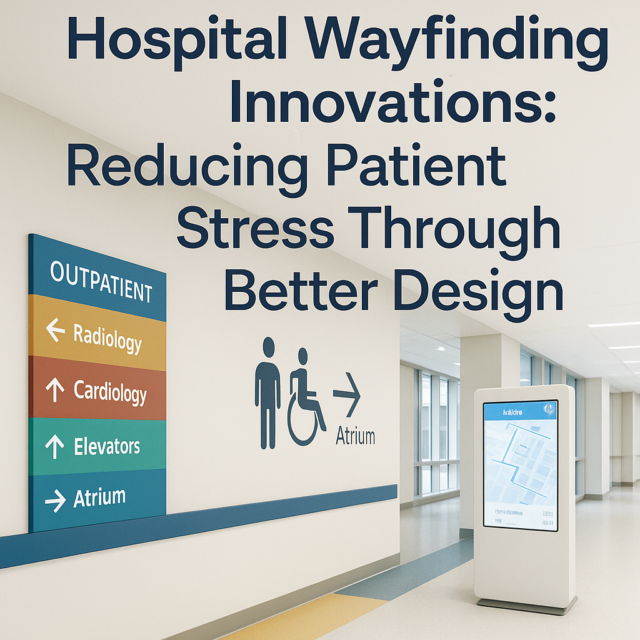In today’s healthcare environment, patient experience is paramount — and it starts long before treatment begins. One often overlooked but critical aspect of that experience is wayfinding: how easily patients, visitors, and even staff can navigate a hospital’s complex environment. Poor wayfinding doesn’t just cause confusion — it leads to stress, missed appointments, and even lower patient satisfaction scores.
With modern hospital upgrades, innovative wayfinding solutions are transforming how people move through healthcare facilities, making a significant impact on both operational efficiency and patient well-being.
Why Wayfinding Matters in Healthcare?
Hospitals are inherently stressful places. Add to that the anxiety of getting lost in a maze of hallways, departments, and towers, and the patient experience worsens dramatically.
Key issues caused by poor wayfinding:
- Increased patient stress and frustration
- Delayed appointments and procedures
- Additional burden on staff for giving directions
- Poor first impressions and lower satisfaction ratings
In contrast, effective wayfinding reduces stress, improves the overall perception of care, and optimizes facility operations.
Innovations Reshaping Hospital Wayfinding
Today’s facility upgrades incorporate advanced strategies that blend technology, design thinking, and psychology to create intuitive navigation experiences.
1. Color-Coded Pathways
Simple yet powerful, color-coded zones help patients identify and follow a clear route to their destination. Different wings, departments, or floors are assigned unique colors, visible through wall accents, flooring, signage, and digital displays.
➡️ Impact: Reduces reliance on complex maps and verbal instructions; instantly recognizable even for non-native speakers or those with reading difficulties.
2. Digital Wayfinding Kiosks and Mobile Apps
Hospitals are deploying interactive kiosks and smartphone apps that offer real-time, GPS-style directions inside the facility. Features include:
- Step-by-step indoor navigation
- Turn-by-turn audio guidance
- Searchable directories for departments, doctors, and services
➡️ Impact: Empowers patients with autonomy, reduces late arrivals, and saves staff time spent answering directional queries.
3. Landmark-Based Navigation
Rather than a string of confusing hallway numbers, landmark-based wayfinding uses recognizable art installations, themed areas, or large visual cues (like a ‘butterfly mural’ or ‘waterfall garden’) as reference points.
➡️ Impact: Easier to remember and far less intimidating for patients with cognitive impairments, children, and elderly visitors.
4. Universal Symbols and Multilingual Signage
In diverse communities, relying solely on English text can be problematic. Hospitals are now adopting universal pictograms and multi-language signage to communicate directions clearly to all visitors.
➡️ Impact: Enhances accessibility for international patients, non-native speakers, and those with limited literacy.
5. Architectural Cues and Environmental Design
Modern hospital designs integrate natural light, distinct ceiling treatments, strategic use of textures, and open layouts to create an intuitive flow that subconsciously guides movement.
➡️ Impact: Patients instinctively move toward destinations without constantly relying on signs or maps.
Benefits of Wayfinding-Focused Facility Upgrades
Upgrading wayfinding isn’t just about aesthetics — it delivers tangible business and clinical benefits:
- Higher patient satisfaction scores (influencing reimbursements and public perception)
- Reduced missed or late appointments
- Lower staff workload
- Improved emergency response efficiency
- Enhanced accessibility and inclusivity
Moreover, facilities that invest in smart wayfinding solutions position themselves as patient-centric innovators, attracting more patients, staff, and partnerships.
Conclusion: Designing for Calm and Confidence
At its core, hospital wayfinding is about designing for humanity — recognizing that when people are vulnerable, simplicity, clarity, and comfort matter more than ever.
As hospitals and healthcare centers plan their next facility upgrades, wayfinding innovations should be at the forefront of design conversations. Because when patients find their way with ease, they start their healing journey with greater confidence, less stress, and a stronger connection to the care they receive.







